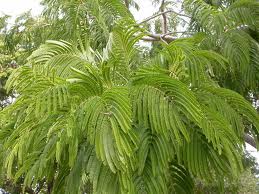Title:Botanical Name:Acacia catechu Wild,Khayer(Nepal)
Purpose:
Helps in digestion,It is used in when small injury,when hives,and in areas where swollen or dis-function of bone and many more.
Target:-
Web diary:
Healing power and curative properties:
The leaves, the bark, the pods and gum of the tree have medicinal virtues. The leaves and the bark are useful in arresting secretion or bleeding. The pods help remove catarrhal matter and phlegm from the bronchial tubes. The gum allays any irritation of the skin and soothes the inflamed membranes of the pharynx, alimentay canal and genito-urinary organs.
Diarrhoea
The various parts of babul tree are useful in diarrhoea of ordinary intensity. A mixture of equal parts of the tender leaves withwhite and black cumin seeds (Zeera) can be administered in doses of 12 grams, thrice daily. An infusion made of the bark of the tree may also be taken thrice daily for the same purpose. The gum used either in decoction or in syrup, is an effective medicine for diarrhoea.
Teeth disorders:
Chewing of fresh bark of this tree daily, helps strengthen loose teeth and arrest any bleeding from the gums. Dirty teeth can be cleaned effectively by brushing them with a powder in which 60 grams of charcoal of babul wood, 24 grams of roasted alum and 12 grams of rock salt have been included.
Eczema
The bark of babul tree is useful in the treatment of eczema. About 25 grams each of this bark and the mango bark should be boilded in about 1 litre of water and the vapours allowed fomenting the affected part. After the fomentation, the affected part should be anointed with ghee.
Tonsilitis
A docoction of the bark, mixed with rock salt, should be used as a gargle in treating tonsilitis.
Conjuctivitis:
The leaves of babul tree are effective in the treatment of conjuctivitis. The leaves, ground to a paste, should be applied on the affected eyes at night, supported by a bandage which should be untied the next morning. This removes pain and redness.
Epiphora:
The leaves are beneficial in treating epiphora that is watering of the eyes, in which tears flow onto the cheeks due to abnormality of the tear drainage system. About 250 grams of leaves should be boiled in one and a quarter litre of water until only a quarter litre of water is left. This should then be filtered and kept in a well-corked bootle. The eye-lids should be painted morning and evening with this liquid.
Leucorrhoea:
The bark of the tree is useful in lercorrhoea. Its decoction should be used as a viginal douche for treating this disorder.
uploaded by Arya K.C. at FB 2018.08.13
link from timber forest products of Nepal
